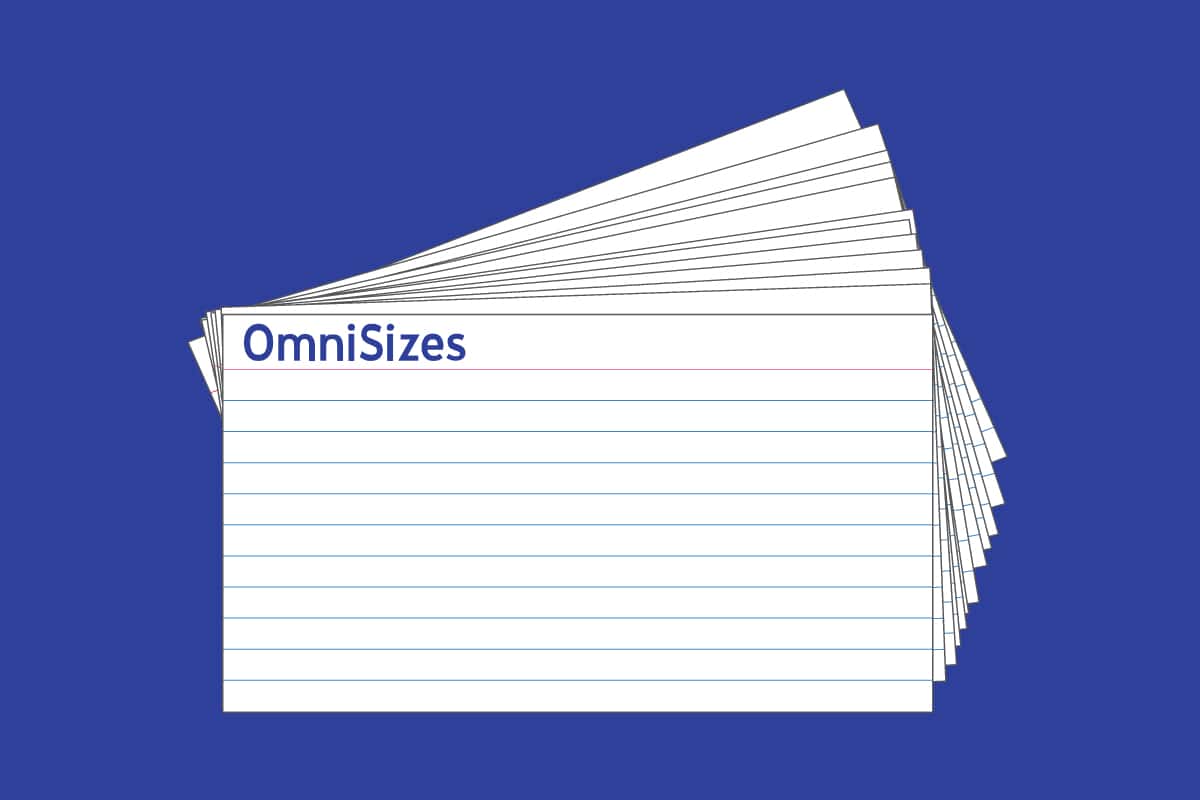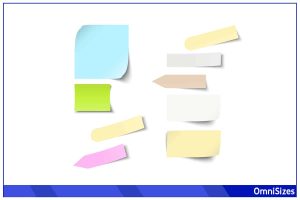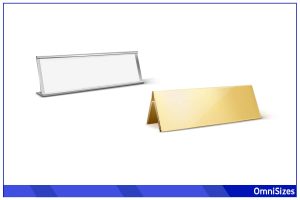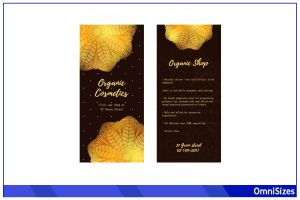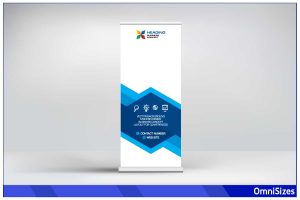Index cards have been essential tools in organizing information for decades. Whether for study notes, recipes, or project planning, these little cards serve as tangible memory aids and data storage. Their portability and simplicity have cemented their place in our daily lives.
Standard index card sizes typically come in three dimensions: 3 x 5 inches, 4 x 6 inches, and 5 × 8 inches. The size you choose can affect how much information you can jot down and how portable the card remains. Different sizes cater to varied needs, from quick notes to detailed data.
This guide will go deeper into the purpose of index cards and their dimensions, from standard to non-standard and international sizes.
What Are Index Cards Used for?
Index cards are versatile tools that have found uses in numerous fields and situations. One of the most common uses is as study aids. Students jot down summaries, formulas, and vocabulary to aid memorization and revision. Additionally, writers employ them in plotting stories to note down plot points or character traits. This can help them easily rearrange the sequence to find the most compelling narrative.
In the professional realm, index cards assist in business presentations. Speakers list out key points, ensuring they cover all topics without missing a beat. For researchers, these cards become invaluable for data collection and note-taking, which allows for easy categorization of facts and observations.
Creative professionals, like graphic designers or artists, use index cards for brainstorming sessions. Similarly, name tag sizes, usually around 1 x 3 inches, are essential in events, workshops, and spaces where quick, visual identification is necessary, facilitating social interactions and networking among professionals.
Sketching out ideas or noting down inspirations can lead to breakthrough concepts. Finally, in everyday life, many use index cards for recipe storage or as DIY flashcards for children’s education.
Standard Index Card Dimensions

When it comes to organizing information, index cards are a go-to choice for many. The standard sizes of these cards are largely influenced by their primary purposes and ease of handling.
3 x 5 Inches: The Classic Choice
The 3 × 5-inch card is perhaps the most recognized size. Compact and easy to handle, it’s an ideal choice for short notes or lists. Students often favor this dimension for flashcards, making them handy tools for on-the-go revisions. Libraries, in the pre-digital era, housed countless 3 × 5 cards in their catalogs, making them a symbol of organized information.
4 × 6 Inches: The Bigger Picture
Offering a larger writing space, the 4 × 6-inch card is perfect for those who need a tad more room without compromising portability. Ideal for more detailed notes, recipes with instructions, or even sketches, this size is versatile. Business professionals might choose this size for jotting down meeting points or to-dos, giving them a clear view of tasks.
5 × 8 Inches: The Largest Standard
If you’re looking for ample space to scribble down comprehensive details, the 5 × 8-inch card is your ally. With a generous writing area, it’s well-suited for elaborate notes, planning, or even makeshift placemats for events. Teachers and presenters often use this size to outline their sessions, ensuring they have all their points at their fingertips.
Non-Standard Index Card Sizes
While the standard index card sizes are popular, there are instances where unique dimensions are desired.
Why Non-Standard Sizes Exist
Non-standard sizes have emerged out of specific requirements. Some professionals or hobbyists find that traditional dimensions don’t quite fit their needs. Whether it’s a unique project, a craft, or a niche organizational system, these sizes fill the gaps left by the standard options.
Popular Non-Standard Sizes and Their Uses
A few notable non-standard sizes include 2.5 × 3 inches and 3 × 3 inches. The 2.5 × 3-inch cards are akin to business cards, making them great for networking events or as product tags in boutique stores. On the other hand, 3 × 3-inch cards are square-shaped and offer a fresh perspective.
International Index Card Dimensions
The world of index cards is as diverse as the countries that use them. Different regions have adopted various standards that best fit their cultural and practical preferences.
A4, A5, A6: Breaking Down the A-Series
The A-Series is a paper size standard used predominantly in countries adhering to the International Standards Organization (ISO).
A4 is a familiar size, often used for printing documents. But when you fold an A4 in half, you get an A5, and folding an A5 in half gives you an A6. A6, measuring 148 × 105 mm, closely aligns with the index card concept, offering ample space for notes in regions where the A-Series dominates.
Dimensions in Different Regions
- North America: The 3 × 5, 4 × 6, and 5 × 8-inch sizes reign supreme. These dimensions are deeply ingrained in the educational and professional systems, making them the go-to choices.
- Europe: The A-Series, particularly the A6, is more widespread. This size is versatile, suited for both academic and personal use.
- Asia: A mix of both North American and European standards can be found. In countries like Japan, uniquely sized cards called “Shitajiki” are also popular, especially among students.
What Are Virtual Index Cards?
In today’s digital age, traditional tools have often found their counterparts in the virtual world. Enter virtual index cards: these are digital versions of the physical cards that provide users with the same functionality but on electronic devices.
Features and Benefits
Searchability: One of the primary advantages of virtual cards is the ability to search through them. No more sifting through stacks; a quick keyword search can bring up the needed card instantly.
- Integration: These cards can seamlessly integrate with other apps or software. For instance, a writer can link cards to specific chapters in a book-writing software.
- Customization: Change fonts, colors, or even add multimedia. Virtual cards can contain images, videos, or hyperlinks, enhancing the content.
- Eco-friendly: For those keen on reducing paper waste, virtual cards are a green alternative.
Popular Virtual Index Card Tools
Several apps and software offer virtual index card functionality. Tools like Trello mimic the index card system, allowing users to create boards with multiple cards. Scrivener, a favorite among writers, offers a corkboard view where each virtual card represents a scene or chapter.
Apps like Evernote and Microsoft OneNote also provide features that can be tailored to mimic the utility of index cards.
